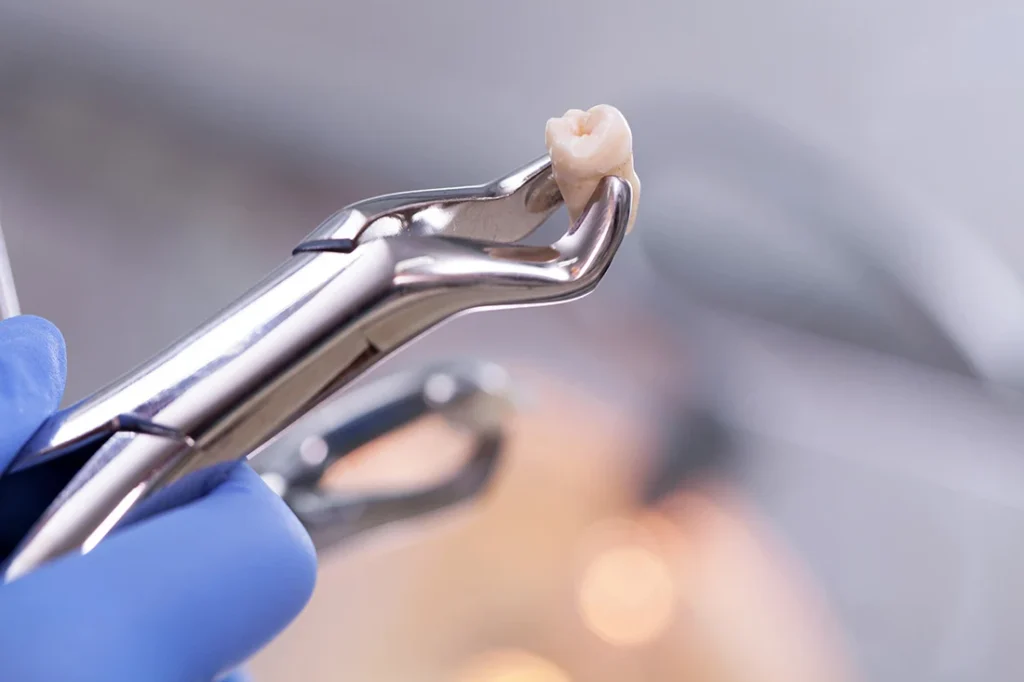Tooth extraction refers to the surgical removal of a tooth from its socket in the jawbone. It is performed based on specific dental conditions where other treatment options are not suitable. This procedure is carefully prescribed by dental professionals, who assess both oral and overall health before making a recommendation.
What Is a Tooth Extraction?
A tooth extraction is the removal of a tooth from the jawbone. Dentists and oral surgeons perform these procedures based on a thorough clinical evaluation and diagnostic imaging, such as dental X-rays, to determine the tooth’s condition and the best removal method. Extractions are grouped into two categories: simple and surgical. Simple extractions address teeth visible in the mouth and generally require only local anesthesia. For surgical extractions, the oral surgeon may make an incision in the gum or remove bone around the tooth for better access. Sedation or general anesthesia may be provided during surgical procedures, depending on the clinical scenario and patient needs.
What Is It For?
Tooth extraction is indicated in cases where the prognosis for the tooth is poor. It is also utilized when a tooth’s retention could negatively affect oral health. Common reasons for tooth extraction include:
- Severe Tooth Decay: When decay has destroyed a significant portion of the tooth structure and cannot be repaired through fillings, crowns, or root canal therapy, removal may be necessary to prevent ongoing discomfort or the risk of infection.
- Advanced Periodontal (Gum) Disease: Periodontal disease can destroy the supporting bone and tissues around teeth. When a tooth becomes loose due to bone loss, extraction may be necessary to control disease progression and protect adjacent teeth.
- Impacted Teeth: An impacted tooth is one that cannot erupt into the mouth due to obstruction by other teeth or bone.
- Overcrowding: In orthodontic cases, teeth may be extracted to create space for better alignment. This often applies when there is inadequate room in the jaw for the proper positioning of all teeth.
- Extensive Dental Trauma: Teeth that have suffered fractures involving the root or significant structural compromise may not be restorable using conventional techniques, prompting removal.
What Does the Process Involve?
The extraction process begins with a clinical evaluation to establish the tooth’s status and surrounding bone condition. Once a treatment plan is determined, local anesthesia is used to numb the area around the tooth. For simple extractions, the dentist loosens the tooth, followed by extraction. The process is usually brief and does not require sutures.
For surgical extractions, the oral surgeon may create a small incision in the gum to expose the underlying tooth and bone. Removal of bone or sectioning of the tooth into pieces can be necessary if the tooth is impacted or broken. The surgeon may place stitches to assist with healing. Sedation or general anesthesia may be employed for complex procedures or patient anxiety. After removal, the provider controls bleeding with gauze and issues directions for home care.
Post-extraction care guidelines typically include keeping the extraction site clean, managing bleeding with gentle pressure, and avoiding actions that could dislodge the blood clot, such as drinking through a straw or vigorous rinsing. Discomfort or swelling may be addressed with over-the-counter pain medication as directed by the dentist.
Consult an Oral Surgeon
Tooth extraction is a procedure performed following a clinical assessment and after factoring alternative treatments. Dentists or oral surgeons will review your dental and medical history, conduct appropriate examinations, and explain the procedure and aftercare. If you have symptoms suggesting tooth disease or injury, consultation with a qualified dental professional can help you understand the next steps in your care.

